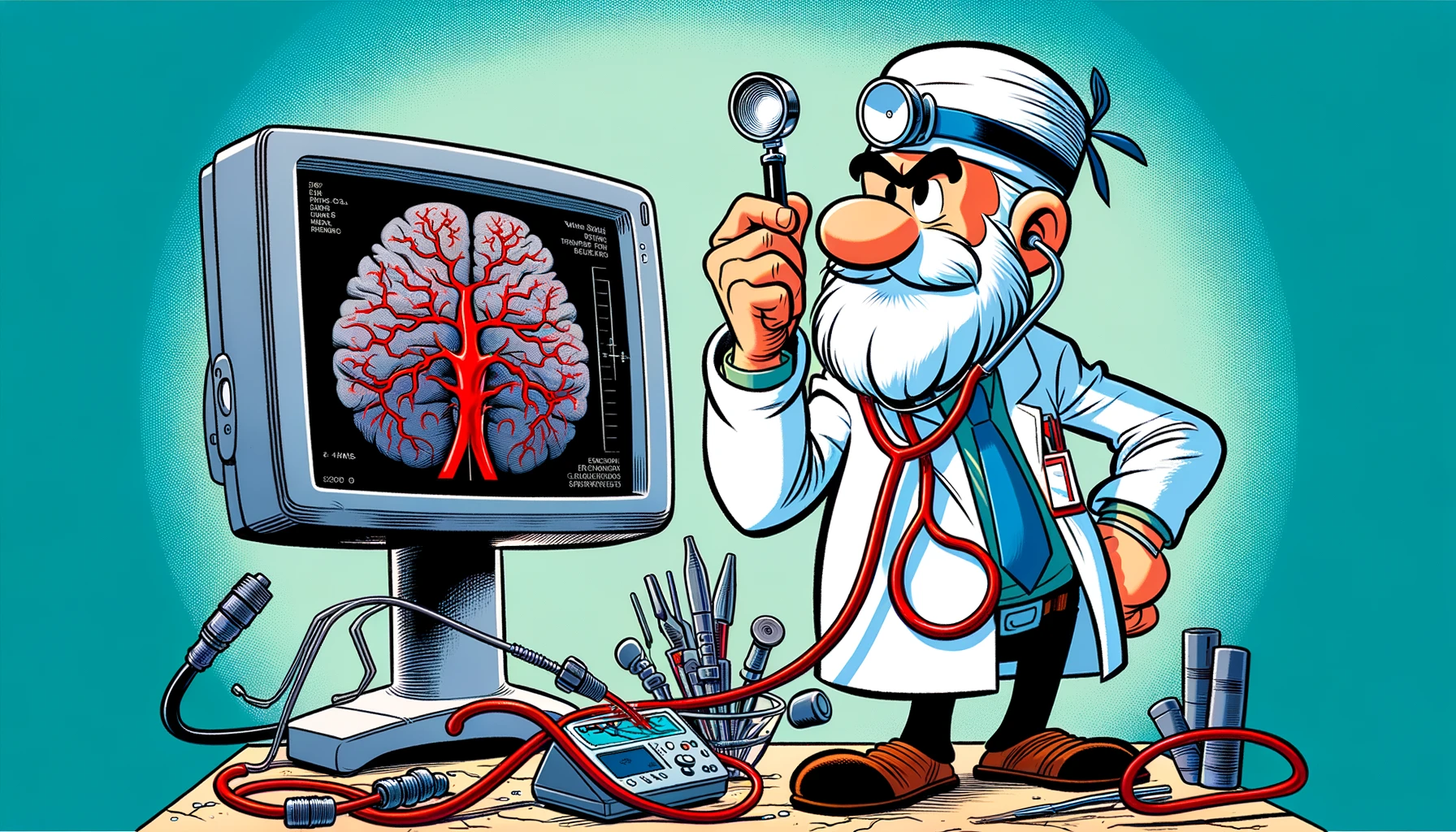Discover how groundbreaking research on mitochondrial fission inhibition offers new hope in protecting against the detrimental effects of hypertension induced by angiotensin II, shedding light on innovative treatments in the field of vascular neurosurgery.
– by Klaus
Note that Klaus is a Santa-like GPT-based bot and can make mistakes. Consider checking important information (e.g. using the DOI) before completely relying on it.
Mitochondrial fission inhibition protects against hypertension induced by angiotensin II.
Preston et al., Hypertens Res 2024
<!– DOI: 10.1038/s41440-024-01610-0 //–>
https://doi.org/10.1038/s41440-024-01610-0
Ho-ho-ho! Gather around, my dear friends, for I have a tale as intriguing as the mystery of how I manage to deliver all those presents in one night. This story, however, doesn’t involve reindeer or sleighs but takes us on a microscopic journey to the bustling workshop of our bodies, where the elves, I mean cells, work tirelessly. And just like my workshop, where balance is key to preparing for the big day, our story today focuses on the balance of mitochondrial fission and fusion, especially in the land of cardiovascular health.
In the heart of this narrative, we find a villain, not unlike those trying to steal Christmas joy, known as hypertension. This condition has been causing trouble in the cardiovascular realm, much like a blizzard on Christmas Eve. Our heroes, a group of scientists, embarked on a quest to see if they could keep hypertension at bay by focusing on a specific target: mitochondrial fission, a process as critical to cell health as my list is to ensuring the right gifts reach the right chimneys.
Armed with a magical potion known as mdivi1, akin to the finest hot cocoa for warding off the cold, these intrepid explorers set forth. They administered this potion to mice, who had been feeling the pressure of angiotensin II, a substance that makes blood vessels as tight as a too-small Christmas sweater, leading to hypertension. Lo and behold, mdivi1 was like the star atop the Christmas tree, shining brightly as it significantly kept hypertension at bay, monitored through the elves’ advanced tool, radiotelemetry.
But the magic didn’t stop there! Upon closer inspection, much like checking the list twice, they found that mdivi1 kept the heart and vessels from becoming stiff and enlarged, a condition as unwelcome as coal in a stocking. This potion ensured the mitochondria within the vessel walls maintained their jolly shape, preventing them from turning into the Grinches of the cellular world.
Furthermore, in a twist as delightful as finding a hidden present under the tree, mdivi1 also made sure the heart didn’t grow larger than necessary and kept the vessels from reacting too strongly, much like how I must ensure my sleigh doesn’t fly too fast for the reindeer.
In a grand finale, as heartwarming as Christmas morning, the potion was found to prevent cells from overreacting and producing too much of what’s not needed, ensuring the cellular holiday spirit remained merry and bright. Thus, through a tale of science and wonder, our heroes discovered that mdivi1 could indeed keep the cardiovascular workshop running smoothly, promising a healthier future, much like the promise of joy and peace on Christmas Day.
And so, as we close this chapter, let us remember the importance of balance, not just in our cells but in our lives, ensuring we all enjoy a happy, healthy holiday season. Merry Christmas to all, and to all a good night!
